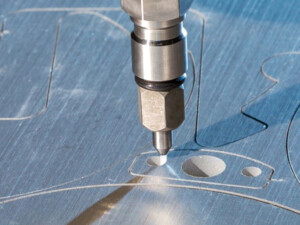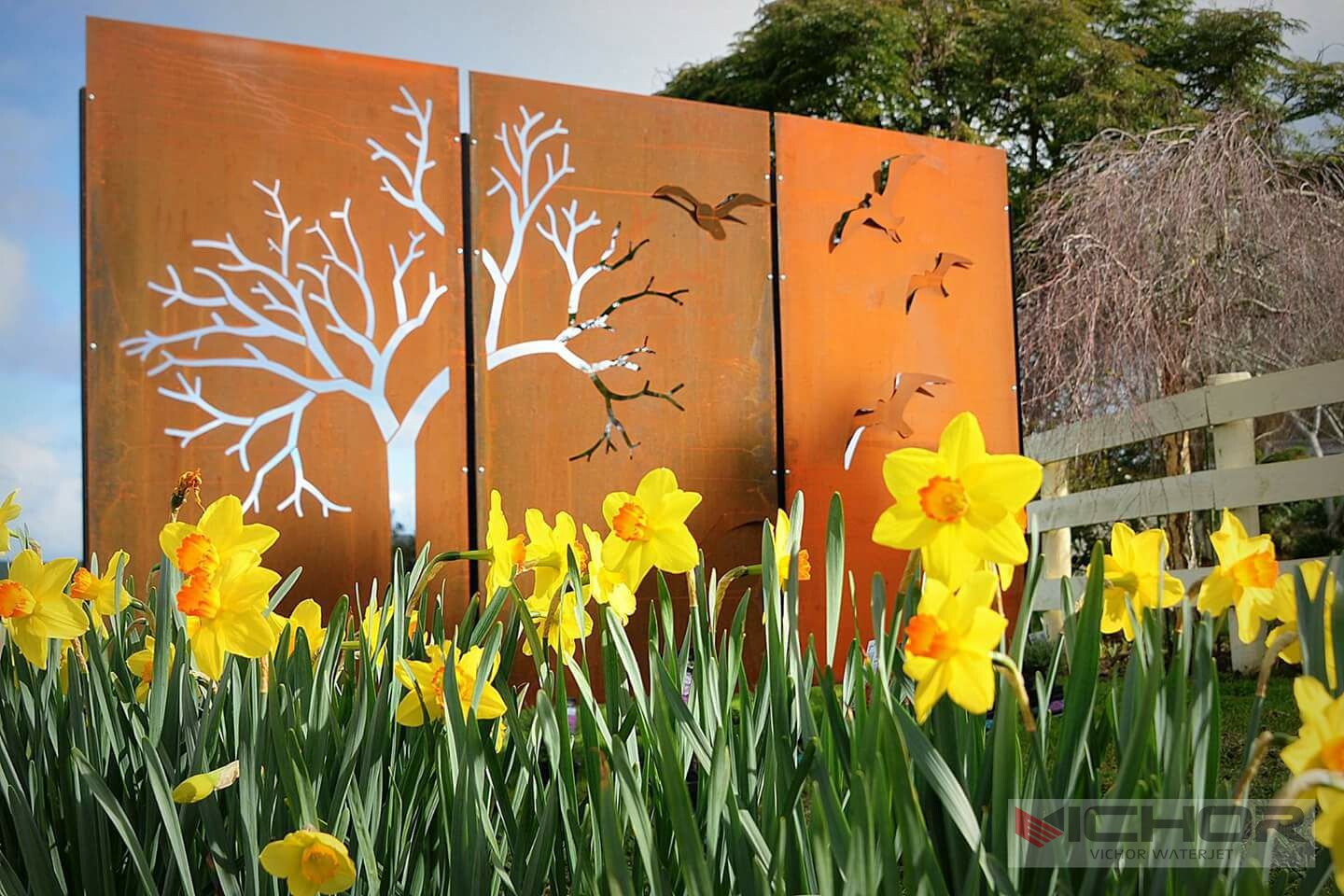
Water Jet Table: What to Consider Before Making Your Investment
When it comes to precision cutting in manufacturing and fabrication, the water jet table has become a go-to solution for many industries. Whether you’re working with metal, stone, glass, or composites, this technology offers unparalleled versatility. But with so many options on the market, how do you know which water jet table is right for your needs? In this article, we’ll break down the essentials—from how these tables work to key factors in selecting one—and highlight why brands like VICHOR are making waves in the international water jet cutting arena. By the end, you’ll have a clear understanding of what to look for, ensuring you make an informed decision that boosts your productivity and ROI.
What Is a Water Jet Table and How Does It Work?
A water jet table is a specialized cutting system that uses a high-pressure stream of water, often mixed with abrasives, to slice through materials with extreme accuracy. Think of it as a high-tech saw that relies on fluid dynamics instead of blades. The process starts with a pump that pressurizes water to levels exceeding 60,000 psi, which is then focused through a narrow nozzle. For harder materials, an abrasive substance like garnet is added to the stream, enhancing its cutting power. This method is known as abrasive water jet cutting, and it’s ideal for tasks requiring intricate designs or clean edges without heat-affected zones.
The water jet table itself is the platform where the material is secured, typically equipped with a CNC (Computer Numerical Control) system to guide the jet along pre-programmed paths. This automation allows for repeatable, high-precision cuts, making it a staple in industries like aerospace, automotive, and art fabrication. Unlike laser or plasma cutters, a water jet table doesn’t generate heat, preventing material distortion—a key advantage for temperature-sensitive substrates. If you’re exploring options, companies like VICHOR offer tables that integrate advanced controls for user-friendly operation, catering to both beginners and seasoned professionals.
Key Benefits of Using a Water Jet Table in Your Operations
Why are so many businesses turning to water jet table technology? The benefits are substantial and varied. First, the cold-cutting process eliminates thermal stress, meaning materials like titanium, marble, or plastics retain their structural integrity. This is crucial in applications where even minor warping could lead to product failure. Additionally, water jet cutting is incredibly versatile; it can handle a wide range of thicknesses and materials without requiring tool changes. From slicing through 6-inch steel to delicate glass engravings, a single water jet table can do it all.
Another advantage is environmental friendliness. Since the process uses water and natural abrasives, it produces minimal hazardous waste compared to other methods. This aligns with growing sustainability goals in manufacturing. Moreover, the precision of a water jet table reduces material waste, saving costs on raw materials over time. Brands like VICHOR have enhanced these benefits with features like automatic height control and software integration, which optimize cutting speed and accuracy. Whether you’re in heavy industry or custom fabrication, investing in a reliable water jet table can streamline your workflow and improve output quality.
Types of Water Jet Tables: Which One Fits Your Needs?
Not all water jet table models are created equal, and understanding the different types can help you choose wisely. The main categories include pure water jet tables and abrasive water jet tables. Pure water jets use only high-pressure water and are best for softer materials like foam, rubber, or food products. They’re often used in packaging or textile industries. In contrast, abrasive water jet tables incorporate garnet or other abrasives, making them suitable for metals, ceramics, and stone. This type is more common in industrial settings due to its robustness.
Beyond that, water jet table systems vary in size and configuration. Smaller, entry-level tables are great for workshops or prototyping, while large-format tables serve high-volume production lines. Some feature gantry-style designs for heavy-duty cutting, whereas others offer 5-axis capabilities for complex, multi-angle cuts. When evaluating options, consider factors like table bed size, pump power, and control software. For instance, VICHOR’s product line includes customizable tables that scale with your business, ensuring you don’t overpay for features you don’t need. By assessing your material types, production volume, and space constraints, you can zero in on the perfect water jet table for your application.
How to Choose the Right Water Jet Table: A Step-by-Step Guide
Selecting a water jet table isn’t just about picking the most expensive model—it’s about matching the machine to your specific requirements. Start by defining your primary materials and thicknesses. If you frequently cut thick metals, you’ll need an abrasive water jet table with a high-horsepower pump. Next, evaluate the table’s cutting area. Measure your typical workpiece sizes to ensure the table can accommodate them without frequent repositioning.
Software and controls are another critical aspect. Look for a water jet table with intuitive CNC software that supports common file formats like DXF or DWG. This simplifies the design-to-cut process and reduces training time. Additionally, consider maintenance needs and support services. A brand like VICHOR often provides comprehensive service packages, which can be a lifesaver for minimizing downtime. Don’t forget to test the machine if possible; hands-on demos reveal much about its ease of use and performance. By following these steps, you’ll invest in a water jet table that enhances efficiency rather than complicating it.
Cost Analysis: What to Expect When Buying a Water Jet Table
The price of a water jet table can vary widely, from $50,000 for basic models to over $200,000 for advanced systems. Several factors influence cost, including pump type, table size, and additional features. For example, direct-drive pumps are more affordable but less durable than intensifier pumps, which are common in industrial-grade tables. The inclusion of abrasive delivery systems or advanced software also adds to the expense.
When budgeting, remember to account for operating costs like water consumption, electricity, and abrasive materials. These can add up over time, so factor them into your ROI calculations. Leasing or financing options might be worth exploring if upfront costs are a concern. Brands like VICHOR often offer competitive pricing without sacrificing quality, making them a smart choice for businesses seeking value. Ultimately, a water jet table is a long-term investment—prioritize reliability and support over the lowest price to avoid costly repairs later.

Technological Advances in Water Jet Table Systems
The water jet table industry has seen significant innovations in recent years, boosting both performance and accessibility. One major trend is the integration of IoT (Internet of Things) capabilities, allowing remote monitoring and predictive maintenance. This means operators can track machine health in real-time, reducing unexpected breakdowns. Another advancement is in nozzle technology, where designs have improved to extend lifespan and enhance cutting speed.
Software has also evolved, with AI-driven algorithms optimizing cut paths for faster production and less wear. For example, some VICHOR models include adaptive control systems that adjust water pressure dynamically based on material density. These improvements make modern water jet table systems more efficient and user-friendly, even for complex jobs. As technology continues to advance, we can expect water jet cutting to become even more precise and affordable, opening doors for smaller businesses to adopt this powerful tool.
Why VICHOR Is a Leader in the Water Jet Cutting Industry
In the competitive world of water jet technology, VICHOR has carved out a reputation for reliability and innovation. Their water jet table products are known for robust construction and high precision, meeting the demands of various sectors from mining to artistic design. What sets VICHOR apart is their focus on customer-centric solutions, such as customizable table sizes and responsive technical support. This approach ensures that clients get a system tailored to their unique workflows.
Moreover, VICHOR invests in research to incorporate the latest advancements, like energy-efficient pumps and eco-friendly operations. If you’re looking for a water jet table that combines cutting-edge technology with practical design, VICHOR is a brand worth considering. Their global presence in the international water jet cutting market means you’re partnering with a company that understands diverse industrial needs.
Frequently Asked Questions (FAQ)
Q1: What materials can a water jet table cut?
A1: A water jet table can cut a wide range of materials, including metals like steel and aluminum, stones such as granite and marble, glass, ceramics, plastics, and composites. The key is whether it uses pure water for softer materials or abrasive-enhanced jets for harder ones.
Q2: How accurate is water jet cutting?
A2: Water jet cutting typically offers accuracy within ±0.005 inches (±0.127 mm), making it one of the most precise cutting methods available. This high precision is maintained across various material thicknesses, thanks to advanced CNC controls.
Q3: What is the maintenance routine for a water jet table?
A3: Regular maintenance for a water jet table includes checking and replacing nozzles, inspecting high-pressure seals, cleaning the abrasive delivery system, and ensuring the water filtration system is functional. Following the manufacturer’s guidelines, like those from VICHOR, can extend the machine’s lifespan.
Q4: How long does a water jet table last?
A4: With proper care, a water jet table can last 10 to 15 years or more. Durability depends on usage intensity, maintenance practices, and the quality of components. Investing in a reputable brand like VICHOR often means better longevity due to higher-grade parts.
Q5: Can a water jet table be used for 3D cutting?
A5: Yes, many modern water jet table systems support 3D cutting through multi-axis heads, allowing for bevels, tapers, and complex contours. This is especially useful in industries like aerospace and automotive for creating intricate parts.
In summary, a water jet table is a powerful asset for any fabrication or manufacturing setup, offering precision, versatility, and efficiency. By considering your specific needs and exploring trusted providers like VICHOR, you can leverage this technology to stay ahead in a competitive market. If you have more questions, feel free to reach out to industry experts for personalized advice.
continue reading
Related Posts
- 1666 words8.4 min read



